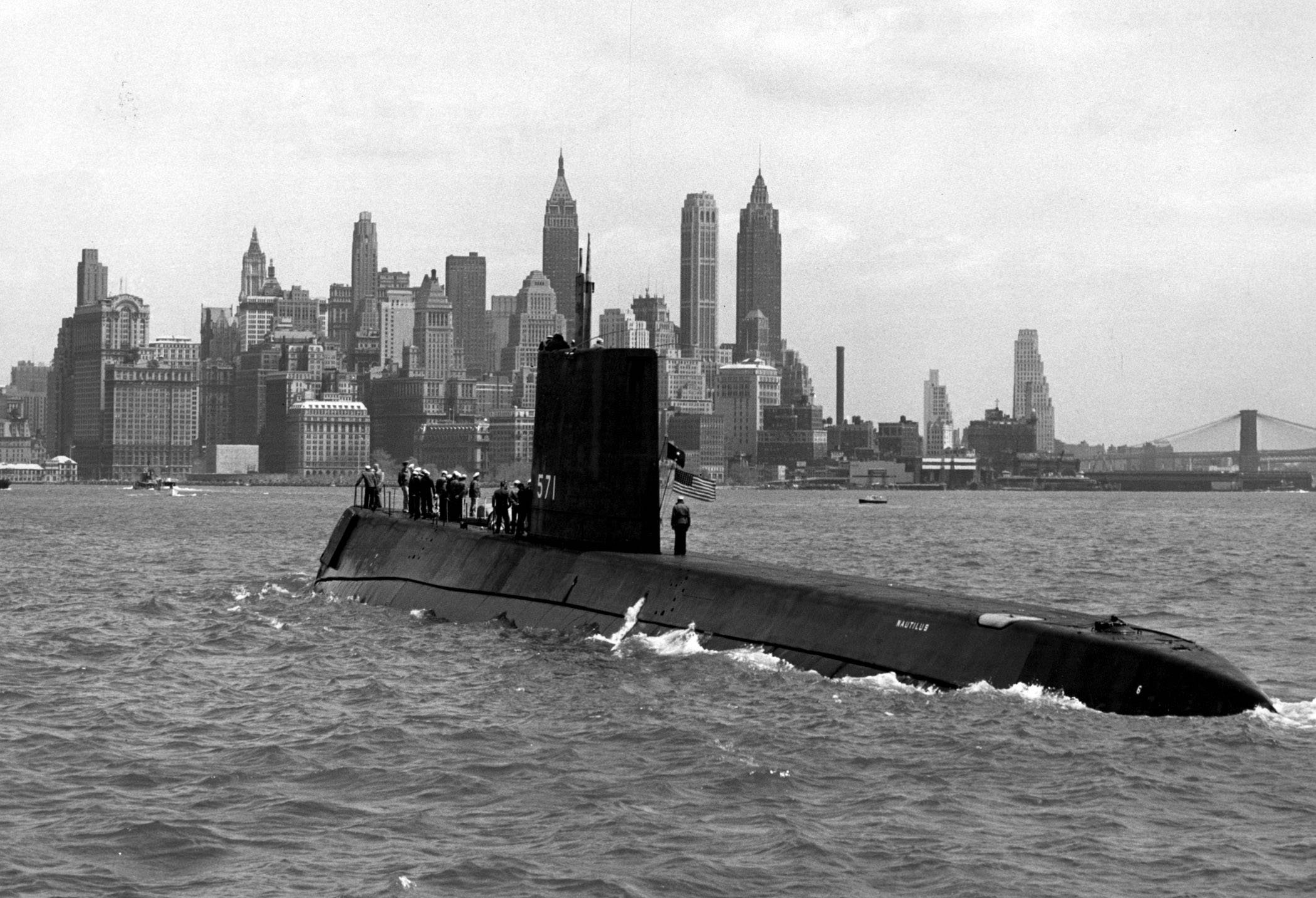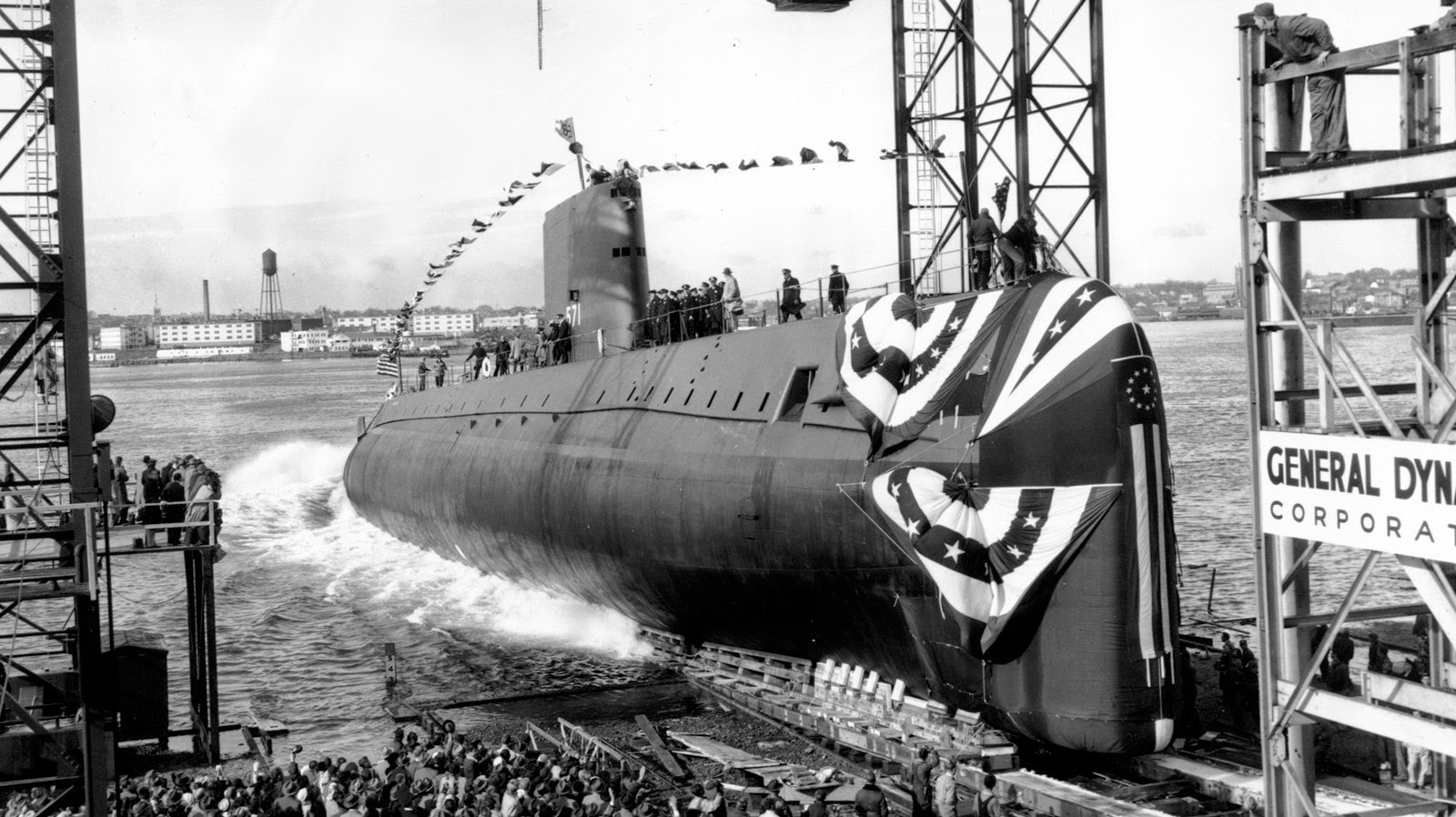
Nautilus takes Manhatten | classicbookreader.wordpress.com
On June 14, 1952, the United States Navy laid down the USS Nautilus. It was to be the first nuclear-powered submarine, but that wasn’t the only thing for which Nautilus would be first.
By the time Nautilus retired in 1980, it had broken almost every submarine record and made the first North Pole crossing. The Navy has since broken many of Nautilus’ objective records with newer subs, but nobody can take away the title of first-ever.
Normally we stay above the water’s surface on History Garage, on the road mostly, but when the anniversary for the USS Nautilus came up, we had to take a dip.
The launch of the Nautilus changed almost everything about the way we navigated underwater, from tip to tail. The life of this submarine, from laying the keel to decommissioning her was not as much a U.S. milestone but one for humanity.
Design
Before the advent of nuclear power, submarines ran on diesel. Combustion engines need air to function, so there was a limit to how long a sub could stay down.
Eventually, they would have to surface or raise a snorkel. It was not only a limitation but a vulnerability. At the surface, they were easy to spot and strike.
The last of the diesels, the Barbel class of subs, were way better than the first subs we built, but they couldn’t hold a candle to the abilities of a nuke-powered sub.
Nautilus could move through the water without a need for air, staying down as long as there was enough compressed air for the crew to breath. [read: a super-long time.]
For perspective, crossing under the geographic North Pole would have never been possible in previous subs, another first that no sub can take from Nautilus.
Because it could be, the USS Nautilus was much larger than the subs it replaced. More sub meant more crew but more weapons, and more powerful weapons.
Because it functioned on the steam generated from a very small source of nuclear fuel, it operated cleaner than the aging diesels. More efficient, Nautilus steamed out the competition traveling at over 20 knots. Later diesels could hit, even exceed those speeds, but not for as long as Nautilus.
The combined technology of Nautilus was such that all of Humanity’s anti-submarine tactics developed during World War II would become worthless once she launched.
Laying Down
There are three milestones in the life of a ship, laying down the keel, the launch, and decommissioning the vessel.
The laying down holds all the prospects of future the investors hope to come. It’s called “laying the keel,” because shipbuilding goes from the bottom, the keel, working up to the deck. Ships don’t have keels in the traditional sense anymore, but we still call the start of the ship the laying down.
For Nautilus’ part, before the first bolt went into her hull, we tested her core engine. Westinghouse Electric Corporation began the assignment in 1947.
By 1953, we had a working prototype for Nautilus’ engine, which means the engine came after we started construction. Talk about pressure, no pun intended.
Launch
The launch is the celebration of the construction and the hope for success. The USS Nautilus (SSN-571) was not the first sub launched bearing the name Nautilus, nor would she be the last. The first one was the SS-168, which served in World War II.
Interesting trivia: The Navy named her after Sir Hubert Wilkins’ 1930 Nautilus expedition to explore under the North Pole in a sub. “Nautilus” first comes from Jules Verne’s fictional account in the book Twenty Thousand Leagues Under the Sea. The U.S. military is famous for pulling names of vessels from fiction to make them real. They did this with the TV show Star Trek, making the Starship Enterprise into a NASA Space Shuttle.
USS Nautilus (SSN-571) launched on September 30, 1954. In January 1955, the crew fired up her nuclear engines for the first time.
The first thing Nautilus did was break the record for submersed time, traveling 1,100 nautical miles. She also broke two records on that first voyage, 1,200 nautical miles in fewer than 90 hours, and the highest sustained speed for an hour at the time. It’s safe to say, the launch was a success.
On July 23, 1958, Nautilus set a course for North to the Pole where she would make history yet again as the first to cross under it without stopping.
In a twist of irony, the Soviets had beaten the U.S. into space with Sputnik, but we beat them underwater in a stronger (albeit less newsworthy) strategical move. The operation, code-named Sunshine, was top secret.
Decommission
USS Nautilus taught us much about engineering submarines in the nuclear age. By the end of her service, the hull of Nautilus developed a vibration. It rattled so bad, sonar was ineffective but worse than that, she was noisy. Sound underwater is more than undesirable. It’s dangerous.
We took key learnings from these opportunities, applying improvements to the subsequent generations of vessels.
The last voyage for the USS Nautilus was in 1979. She traveled from Groton, Connecticut to Vallejo, California. That journey started on April 9, 1979, and ended May 26, 1979. On March 3, 1980, the Navy decommissioned the venerable sub.
By 1982, the U.S. Secretary of the Interior designated her a Historic National Landmark, which is a bizarre designation for a vessel, but that protects her from neglect.
After an overhaul and a journey back to Groton, Connecticut, Nautilus parked in her forever home at the Submarine Force Library and Museum, opening for tours on April 11, 1986.
The United States submarine program has been 100 percent nuclear since commissioning the last diesel sub in 1959.
Today’s subs are so technologically innovative, we’ll not learn the details of those vessels until we decommission them in the decades to come. By then, the vessels that replace them will be even more advanced, quieter, invisible.
They can all thank Nautilus for breaking the mold.




